Study on the Mechanical Properties of Fly-Ash-Based Light-Weighted Porous Geopolymer and Its Utilization in Roof-Adaptive End Filling Technology
Abstract
:1. Introduction
2. The Modeling of the Basic Structure of FBLPG Materials
2.1. The Preparation of the FBLPG Materials
2.2. The Model for the Globular Unit Structure of FBLPG Slurry
2.3. The Model for the Three-Dimensional Structure of Solidified FBLPG
3. Mechanical Properties Study of FBLPG
3.1. Analysis of the Factors Influencing Distribution Characteristics of FBLPG Pores
3.2. A Force Analysis of the Bore Walls in the Hexagon Honeycomb Cell Structure
3.3. An Analysis of the Plastic Yielding Performance of FBLPG
4. Application of FBLPG in the Filling and Plugging in the Roadway End
4.1. An Analysis of Air Leakage Channels and Spontaneous Combustion in the Mined-Out Area
4.2. Roof-Adaptive End Filling Technology
4.3. Evaluation of the End Filling and Plugging Effect
5. Conclusions
Author Contributions
Funding
Conflicts of Interest
References
- Fu, C.; Haochen, Y.; Zhengfu, B.; Dengyu, Y. How to handles the crisis of coal industry in China under the vision of carbon neutrality. J. China Coal Soc. 2021, 46, 1–14. [Google Scholar] [CrossRef]
- Qu, J.-B.; Wang, P.; Bo, X.; Xue, X.-D.; Dong, G.-X.; Cui, L.; Kang, M.-X.; Wang, T.; Tang, L.; Zhu, F.-H.; et al. Inventory and Distribution Characteristics of China’s Thermal Power Emissions Under Ultra-Low Reconstruction. YIN Dengyu V 2020, 41, 93–99. [Google Scholar]
- Zhang, J.S.; Kang, E.S.; Zhang, X.Y.; Sun, K.C. A study of water resource utilization or water resource recycle in Northwestern of China. J. Lanzhou Univ. (Nat. Sci.) 2003, 39, 95–100. [Google Scholar]
- Xu, J.-L.; Zhou, Y.-M.; Wang, Y.-P.; Jia, X.-L. Evaluation index system of highway traffic value in northwest China. J. Chang. Univ. (Nat. Sci. Ed.) 2014, 34, 79–87. [Google Scholar]
- Ding, G.-Y.; Chen, G.; Chen, M.-B. Orientation and Key Points to the Utilization of Solid Wastes Discharged by Coal Power Station. Coal Ash 2012, 1, 25–27. [Google Scholar]
- Li, P. Comprehensive Utilization of Coal Power Solid Waste. In Proceedings of the 2020 High-Level Forum on Comprehensive Utilization of Industrial Solid Waste in Beijing-Tianjin-Hebei and Its Surrounding Regions, Beijing, China, 30 October–1 November 2020; The Chinese Ceramic Society: Beijing, China, 2020; p. 4. [Google Scholar]
- Shi, C.-Z. Caving of Coal and Strata in the End Zone of Mechanized Caving Face in Yanzhou Coal Mine; China University Of Mining and Technology: Xuzhou, China, 2015. [Google Scholar]
- Liu, C. Study on the Supporting Technology of T-Junction of the Fully Mechanized Top Coal Caving Longwall Face in Pitched Thick Seams; Xi’an University of Science and Technology: Xi’an, China, 2005. [Google Scholar]
- Xu, H.-J.; Liu, J.; Xu, J.-H. Numerical simulation research on gob air leakage of shallow-buried thin bedrock thick coal seam with fully-mechanized top coal caving technology. J. China Coal Soc. 2011, 36, 435–441. [Google Scholar]
- Tang, X.-P. Study on the Technology of Filling and Plugging Air Leakage at the End of Fully Mechanized Caving Face in Dananhu No. 1 Mine; China University Of Mining And Technology: Xuzhou, China, 2019. [Google Scholar]
- Le, N.P.; Sidoroff, G.V. The Utilisation of Flyash for Road Layers of Fine Treated Soils, Fly Ash; National Academy of Sciences: New York, NY, USA, 1900. [Google Scholar]
- Chapelle, J.A. The Use of Granular Slag Sand and Fly Ash in Road Construction by the Soil-Cement Technique, Road Abstracts; National Academy of Sciences: New York, NY, USA, 1900; Volume 27. [Google Scholar]
- Tong, X.-L.; Wang, Y.-M. Carbonization resistance of fly ash brick. J. Chin. Ceram. Soc. 1965, 1, 66–67. [Google Scholar]
- Zhe, J. Application of fly ash in building materials. China Power 1958, 10, 305. [Google Scholar]
- Bai, Z.; Yang, J.; Ding, H. Research progress on silicate solid wastes I—Current developments in application of fly ash. J. Chin. Ceram. Soc. 2007, 1, 176–183. [Google Scholar]
- Hardijito, D.; Wallah, S.E.; Sumajouw, D.; Rangan, B.V. On the Development of Fly Ash-Based Geopolymer Concrete. ACI Mater. J. 2004, 106, 467–472. [Google Scholar]
- Ahmaruzzaman, M. A review on the utilization of fly ash. Prog. Energy Combust. Sci. 2010, 36, 327–363. [Google Scholar] [CrossRef]
- Blissett, R.S.; Rowson, N.A. A review of the multi-component utilisation of coal fly ash. Fuel 2012, 97, 1–23. [Google Scholar] [CrossRef]
- Xiong, L.; Wan, Z.; Qin, S.; Shi, P.; Wu, Z. A Novel Class F Fly Ash-Based Geopolymer and Its Application in Coal Mine Grouting. Adv. Civ. Eng. 2020, 2020, 8899173. [Google Scholar] [CrossRef]
- Xiong, L.; Wan, Z.; Zhang, Y.; Wang, F.; Kang, Y. Fly Ash Particle Size Effect on Pore Structure and Strength of Fly Ash Foamed Geopolymer. Adv. Polym. Technol. 2019, 2019, 1098027. [Google Scholar] [CrossRef] [Green Version]
- Shehata, N.; Sayed, E.T.; Abdelkareem, M.A. Recent progress in environmentally friendly geopolymers: A review. Sci. Total. Environ. 2020, 762, 143166. [Google Scholar] [CrossRef]
- Ren, B.; Zhao, Y.; Bai, H.; Kang, S.; Song, S. Eco-friendly geopolymer prepared from solid wastes: A critical review. Chemosphere 2020, 267, 128900. [Google Scholar] [CrossRef]
- Guo, X.-L.; Shi, H.-S. Compressive Strength and Mechanism of Geopolymers from Flue Gas Desulferization Gypsum and Fly Ash. J. Tongji Univ. (Nat. Sci.) 2012, 40, 573–577. [Google Scholar]
- Zhu, X.-M. Study on the Fly Ash Geopolymer Materials; Nanchang University: Nanchang, China, 2005. [Google Scholar]
- Long, F.-M.; Hu, M.-Y.; Ding, Z.-T.; Nie, Z.-J. Study on the Fly Ash Geopolymer Material and It’s Property. J. Nanchang Univ. (Eng. Technol.) 2006, 28, 173–176. [Google Scholar]
- Masi, G.; Rickard, W.; Vickers, L.; Bignozzi, M.C.; Riessen, A.V. A comparison between different foaming methods for the synthesis of light weight geopolymers. Ceram. Int. 2014, 40, 13891–13902. [Google Scholar] [CrossRef] [Green Version]
- Zhang, Z.; Provis, J.L.; Reid, A.; Hao, W. Geopolymer foam concrete: An emerging material for sustainable construction. Constr. Build. Mater. 2014, 56, 113–127. [Google Scholar] [CrossRef]
- Ashby, M.F.; Evans, A.; Fleck, N.A.; Gibson, L.J.; Hutchinson, J.W.; Wadley, H. Metal foams: A design guide. Appl. Mech. Rev. 2012, 23, 119. [Google Scholar]
- Banhart, J. Characterization and Applications of Cellular Metals and Metal Foams. Prog. Mater. Sci. 2001, 46, 559–632. [Google Scholar] [CrossRef]
- Jinsen, Z. Research on Equivalent Models of the Mechanical Function for Aluminium Honeycomb Sandwich Panel; Nanjing University of Aeronautics and Astronauticsl: Nanjing, China, 2006. [Google Scholar]
- Fu, M.-H.; Yin, J.-R. Equivalent elastic parameters of the honeycomb core. Acta Mech. Sin. 1999, 15, 113–118. [Google Scholar]

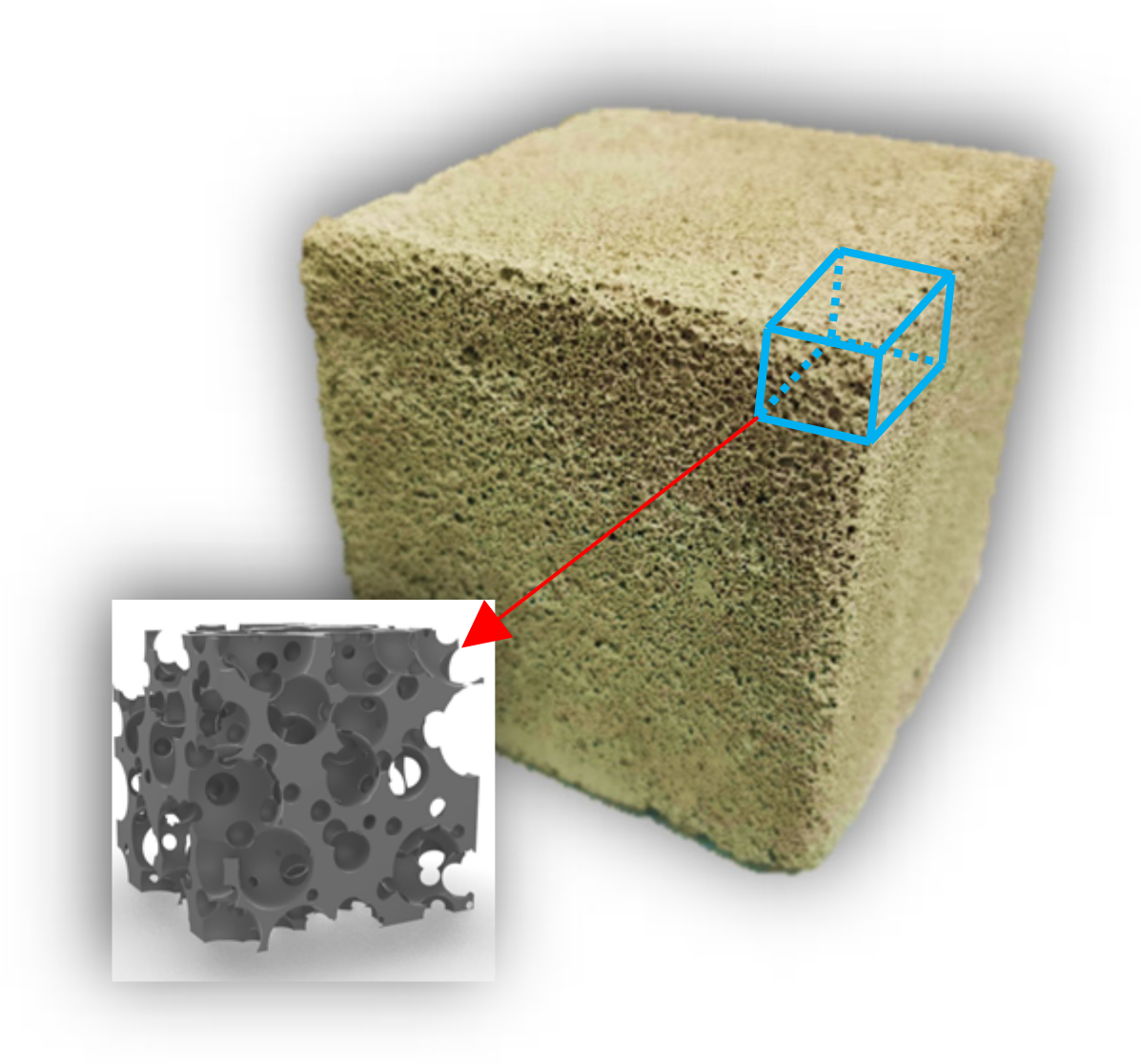

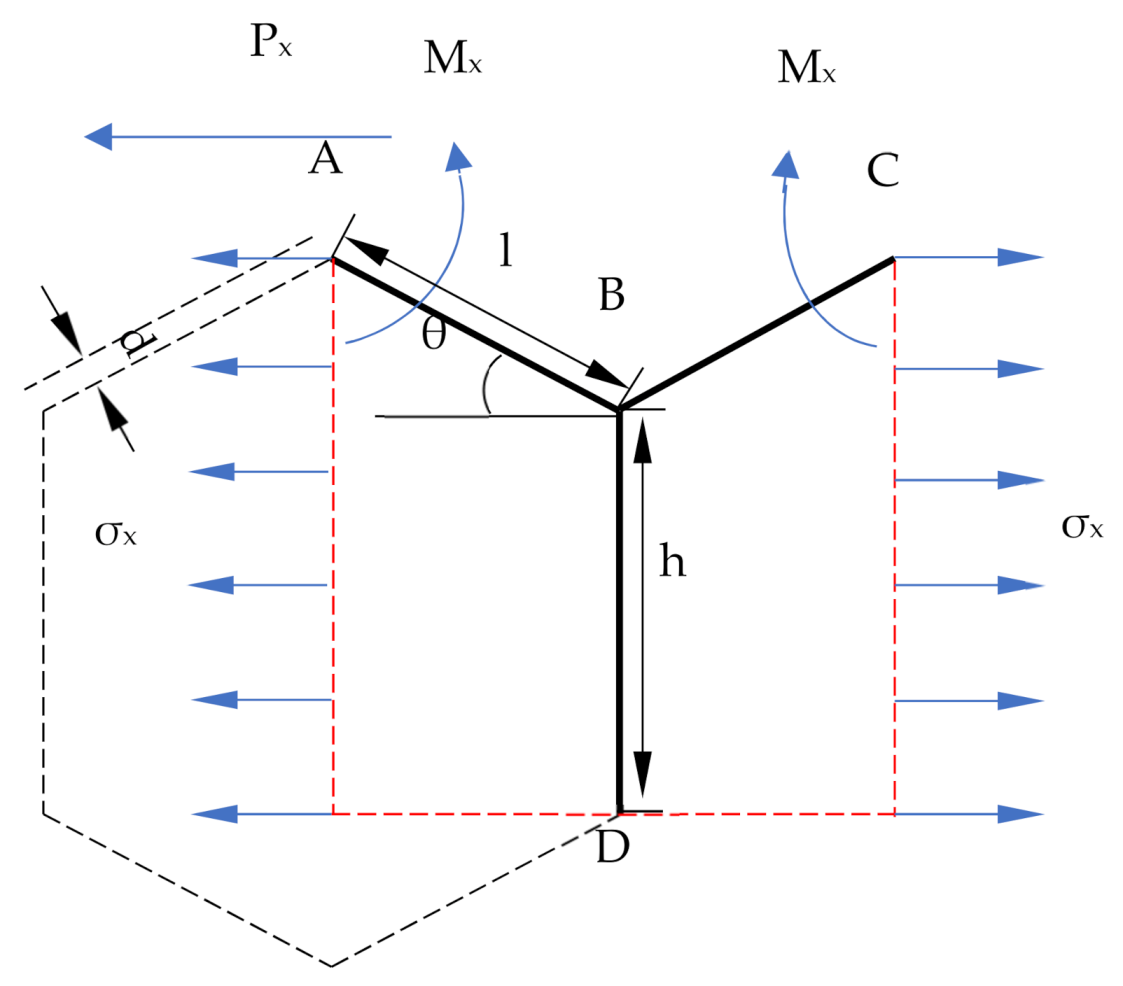

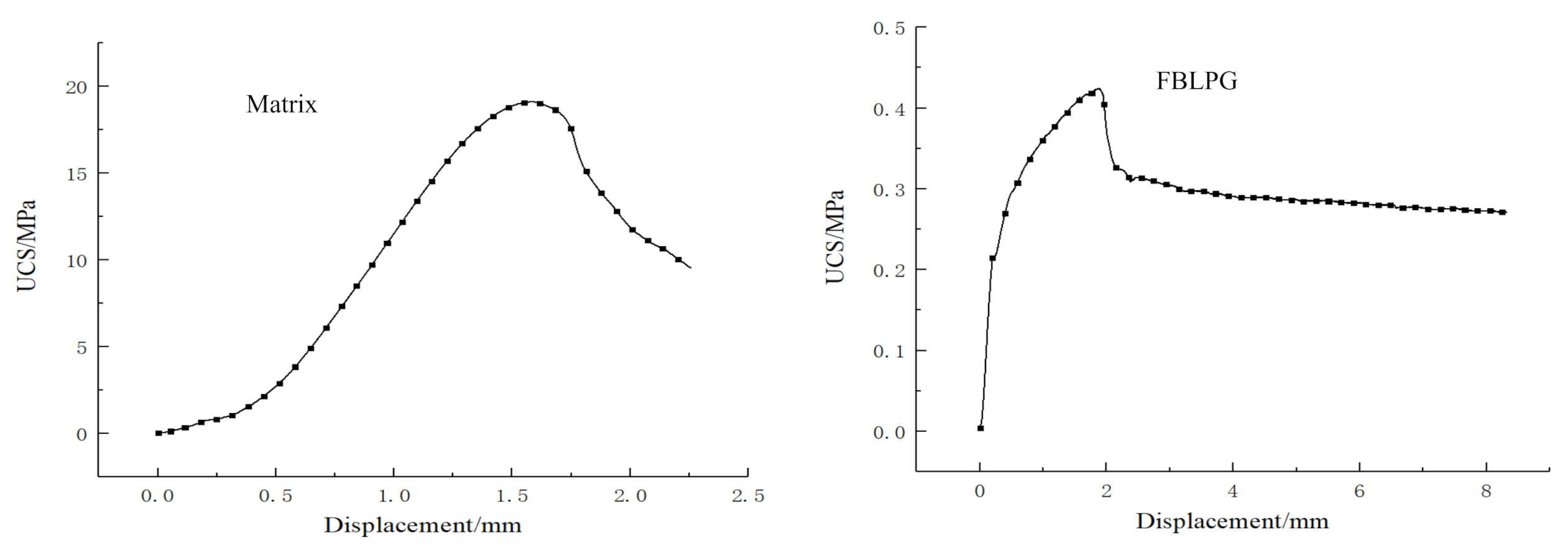
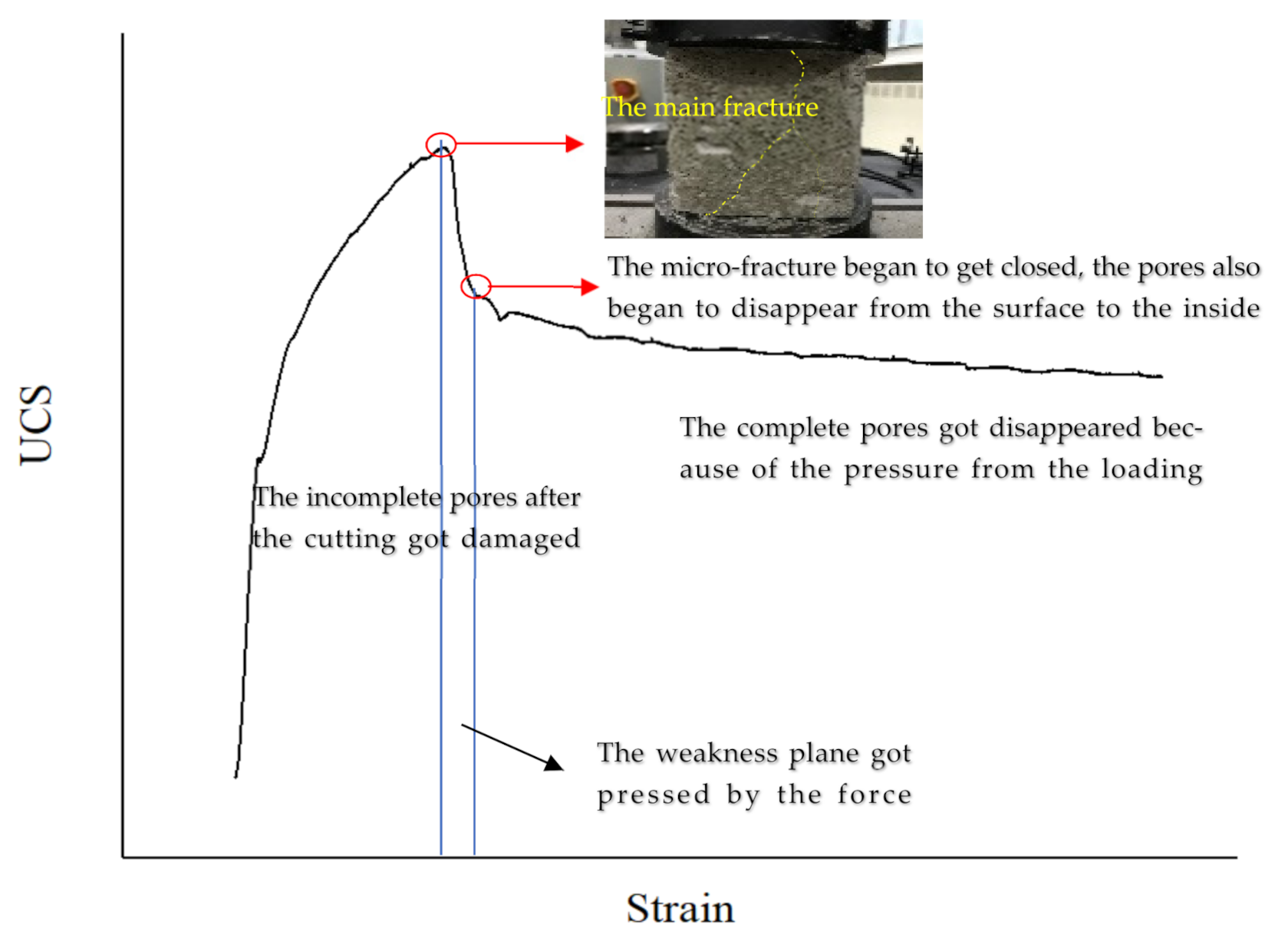
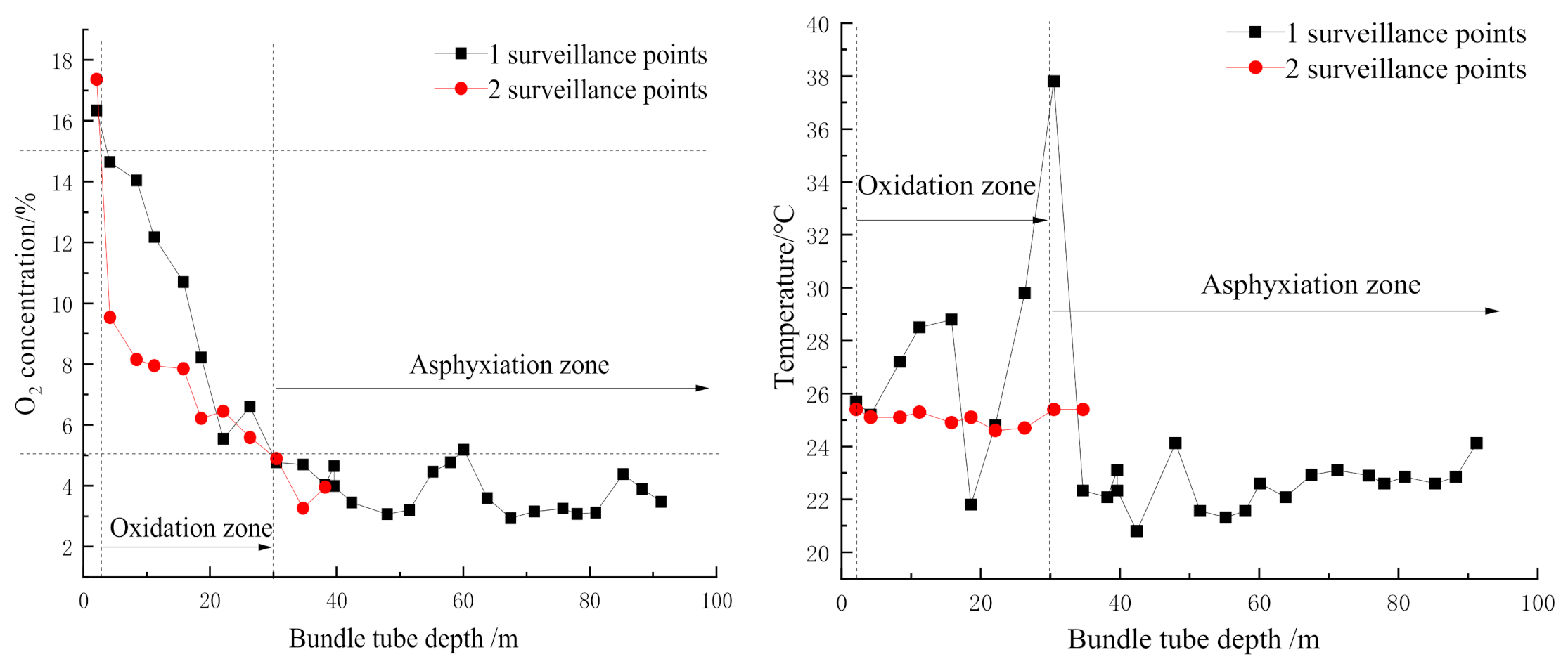
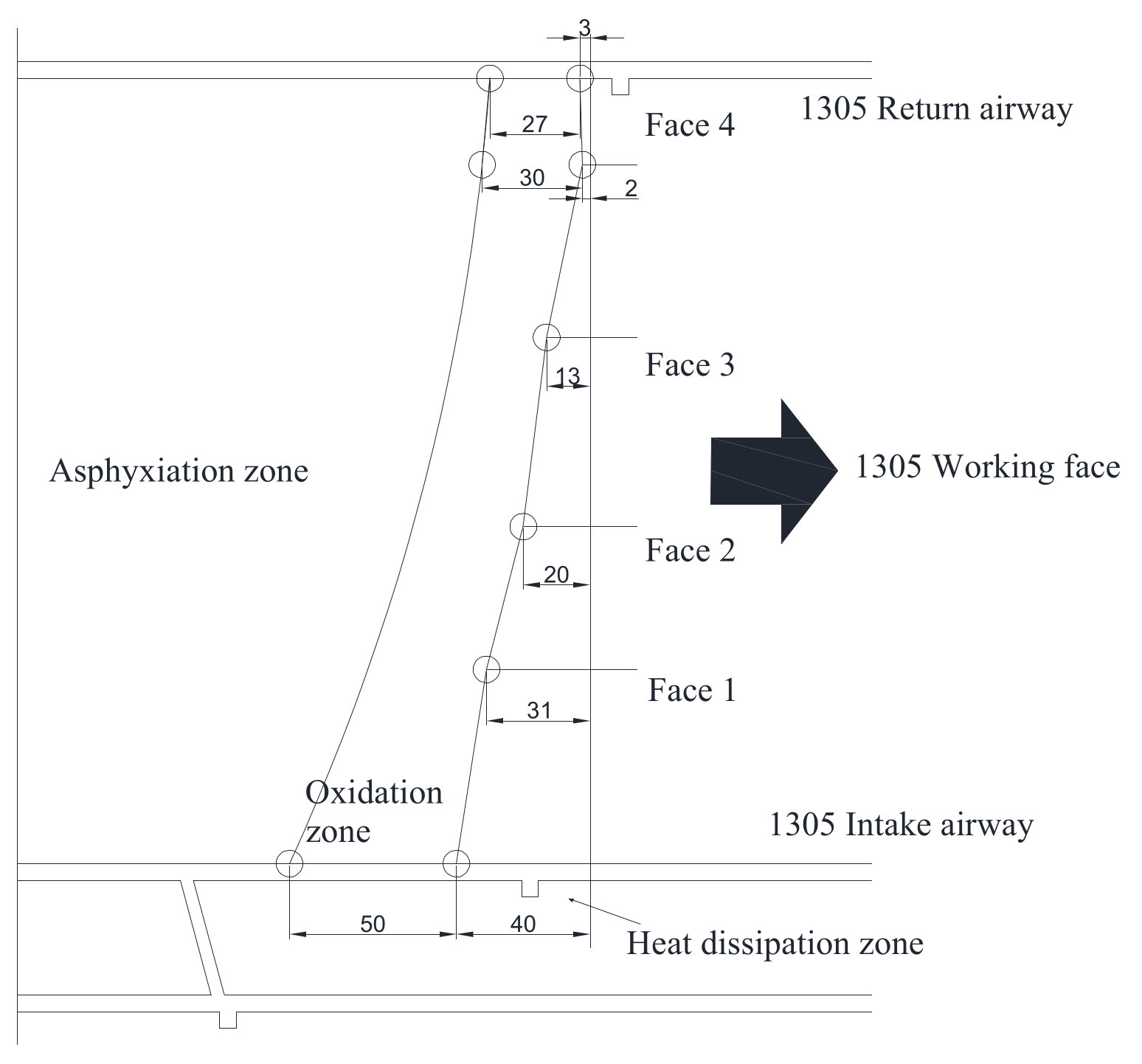
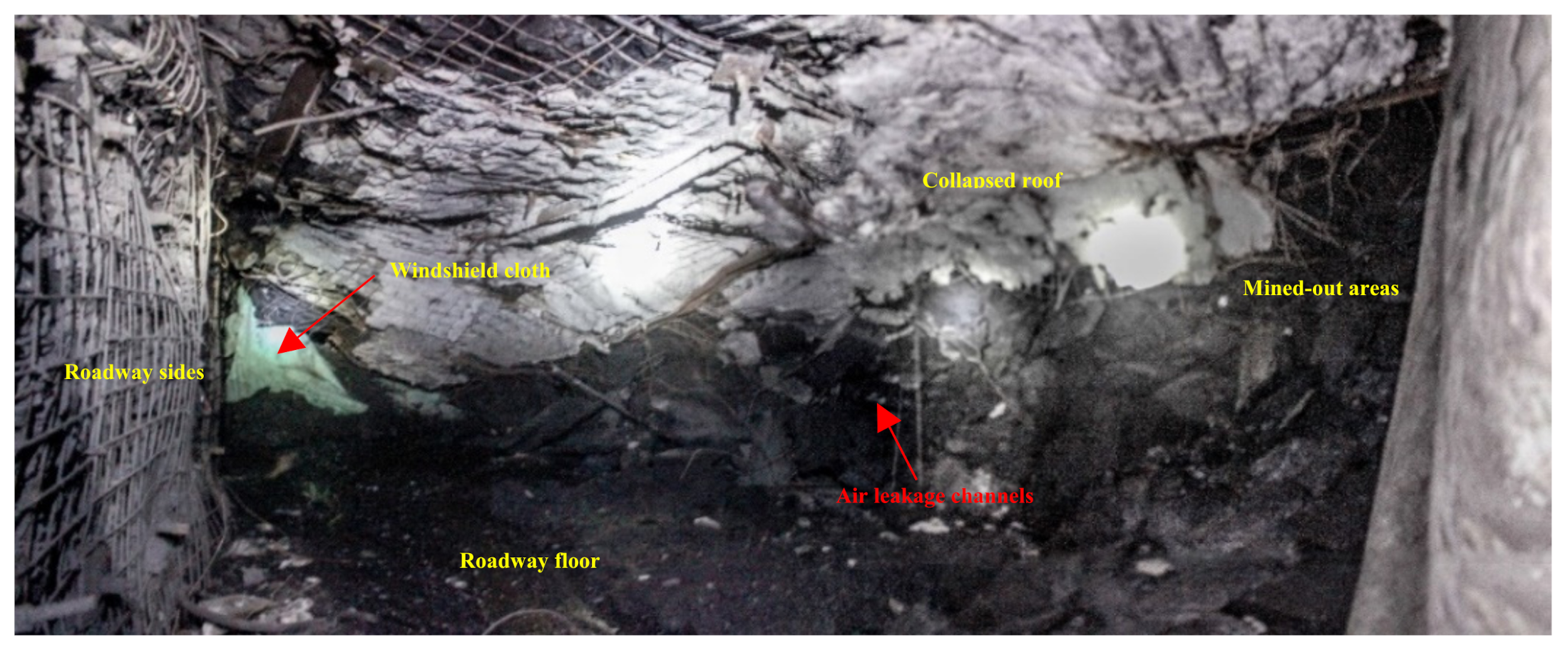

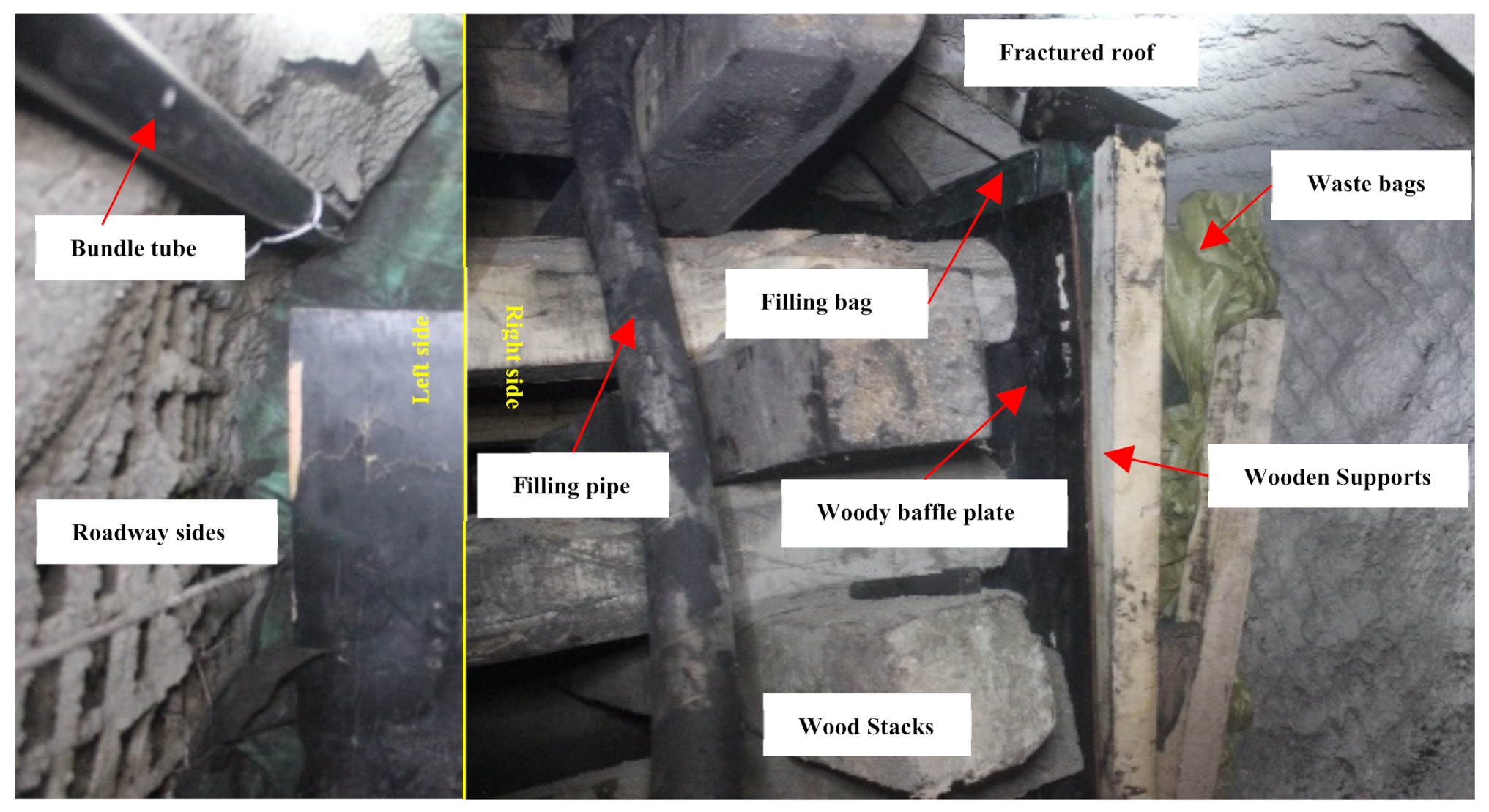


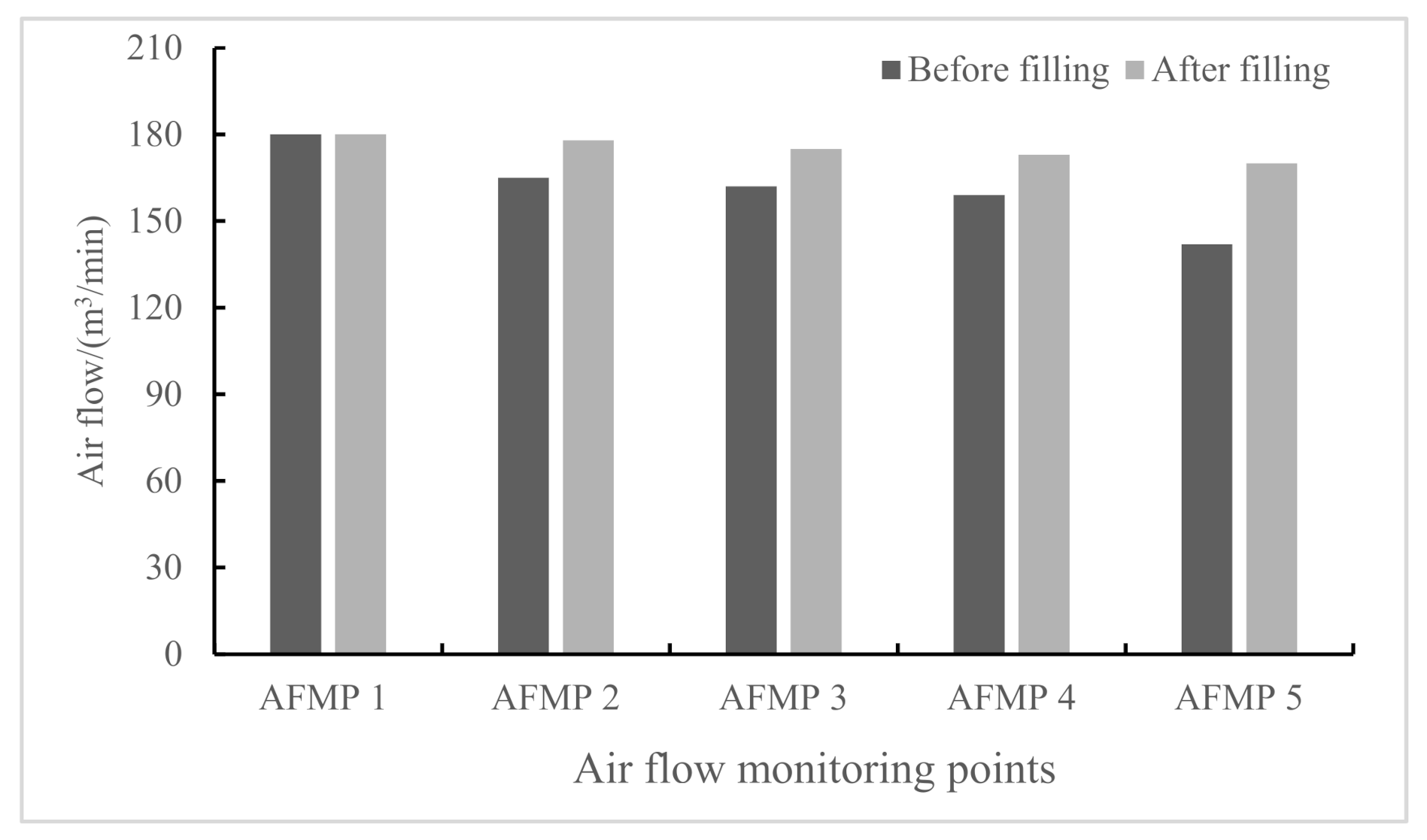
| Raw Material | FA | CC | SH | CM | SS | CS | HP | W |
|---|---|---|---|---|---|---|---|---|
| Ratio | 0.5 | 0.5 | 0.02 | 0.02 | 0.01 | 0.01 | 0.07 | 0.36 |
Publisher’s Note: MDPI stays neutral with regard to jurisdictional claims in published maps and institutional affiliations. |
© 2021 by the authors. Licensee MDPI, Basel, Switzerland. This article is an open access article distributed under the terms and conditions of the Creative Commons Attribution (CC BY) license (https://creativecommons.org/licenses/by/4.0/).
Share and Cite
Xiong, L.; Fan, B.; Wan, Z.; Zhang, Z.; Zhang, Y.; Shi, P. Study on the Mechanical Properties of Fly-Ash-Based Light-Weighted Porous Geopolymer and Its Utilization in Roof-Adaptive End Filling Technology. Molecules 2021, 26, 4450. https://doi.org/10.3390/molecules26154450
Xiong L, Fan B, Wan Z, Zhang Z, Zhang Y, Shi P. Study on the Mechanical Properties of Fly-Ash-Based Light-Weighted Porous Geopolymer and Its Utilization in Roof-Adaptive End Filling Technology. Molecules. 2021; 26(15):4450. https://doi.org/10.3390/molecules26154450
Chicago/Turabian StyleXiong, Luchang, Bowen Fan, Zhijun Wan, Zhaoyang Zhang, Yuan Zhang, and Peng Shi. 2021. "Study on the Mechanical Properties of Fly-Ash-Based Light-Weighted Porous Geopolymer and Its Utilization in Roof-Adaptive End Filling Technology" Molecules 26, no. 15: 4450. https://doi.org/10.3390/molecules26154450
APA StyleXiong, L., Fan, B., Wan, Z., Zhang, Z., Zhang, Y., & Shi, P. (2021). Study on the Mechanical Properties of Fly-Ash-Based Light-Weighted Porous Geopolymer and Its Utilization in Roof-Adaptive End Filling Technology. Molecules, 26(15), 4450. https://doi.org/10.3390/molecules26154450







